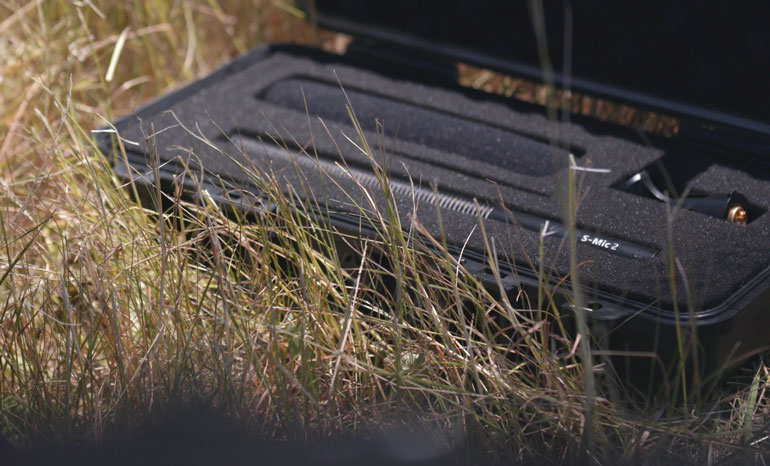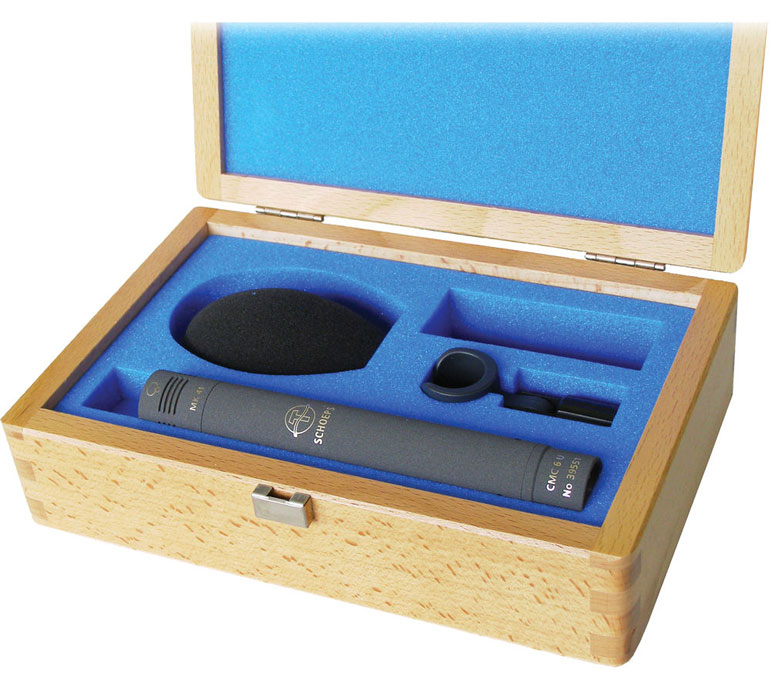Deity S-Mic 2 – The Constraints of Comparing Microphones
There’s no better example of the law of diminishing returns than in the world of microphones. After reaching a certain level of performance, spending more money on a better microphone will likely give you much less improvement in quality.
With the release of the Deity S-Mic 2 shotgun microphone, Deity is aiming to hit the peak of the quality to cost ratio. They want to provide a workhorse microphone that everyday video producers, vloggers, and sound recordists can depend on for their needs, at a price point that gives you a lot of bang for the buck.
But instead of applauding Deity for reaching this ideal value to price ratio, most conversations and reviews about the S-Mic 2 strive to compare it to more established brands of microphones, which can cost 3x as much. It's not specific to the Deity S-Mic, though. Comparing microphones is an established part of the audio gear review industry.
Is the Deity S-Mic 2 as good as the Sennheiser MKH-416? Is a more expensive microphone better than a lower priced mic? And what is a “better” microphone anyway?
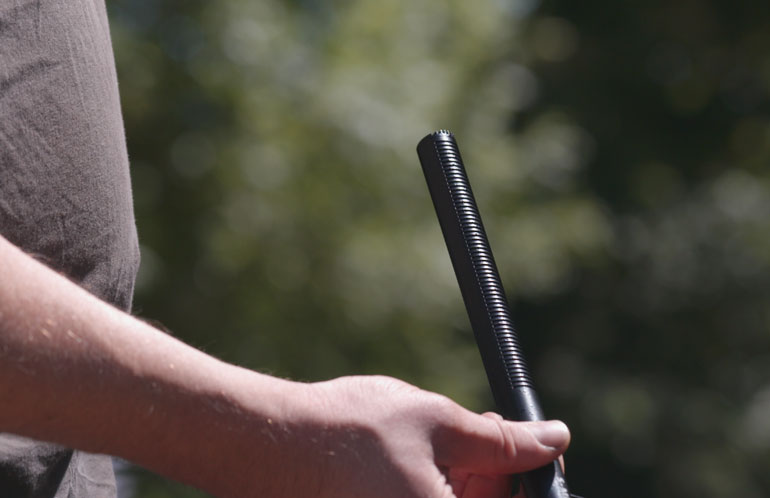
Audio Professionals: This Article is Not For You
In this post, we will attempt to dispel some of the assumptions surrounding microphone comparisons, while also taking a look at the Deity S-Mic 2 shotgun from the perspective of video producers who seek to simply capture great audio, with a reasonable amount of expertise and tools at our disposal.
This article is not for audio experts or sound professionals, whose livelihood certainly depends on microphone tests and precise knowledge of how each mic differs from one another. If a major part of your business relies on your mastery of microphones, then by all means you ought to know how your tools stack up to each other.
But for the rest of us, we don’t need to concern ourselves with the minor variations in Signal-to-Noise ratio between a group of professional microphones. Most likely, they’re all perfectly suited for our needs. Plus, we’re probably not even using these microphones in a way that maximizes their potential.
For the 99% of us who are shopping around for microphones, we have only a couple things to consider:
- Does this microphone sound good for how much I want to spend?
- In what scenarios should I use this microphone, versus another one that is better suited for the task?
Comparing Microphones
In his overview of shotgun microphones from back in 2008, our friend Dan Brockett laid out all the specs for some of the industry standard microphones that are used in field productions every day. If you haven't already, we highly recommend you read the full article and listen to the examples.
Dan covers mics from Sanken, Schoeps, Neumann, Sennheiser, Beyerdynamic, Octava, and Audio-Technica. Of course there are many more models from each of these manufacturers that weren’t included, as well as newer offerings from Rode, Azden, and Deity Microphones.
In his review, Dan makes it very clear that none of these mics sound “bad.” They’re all perfectly suited for professional audio capture. But they do sound different in a variety of scenarios and with different voices. And Dan offers his personal preference for what mics he found sounded better to his ears, using a particular set of speakers, arranged in an environment specific to him.
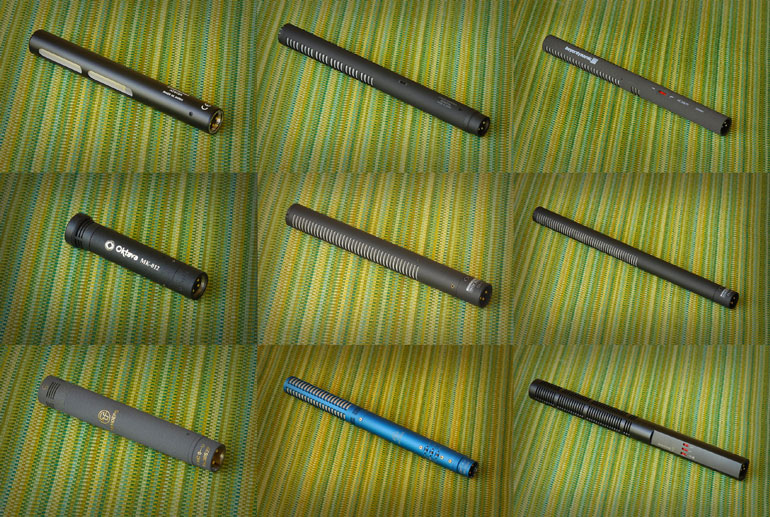
Images: Dan Brockett - Choosing the Right Microphone
And to round out the review, Dan summarizes by saying there is no such thing as a good all-around microphone. Each mic has a personality and performance that might be a better fit for a certain environment or job.
But in our opinion, only a limited percent of audio professionals are going to carry more than a couple microphones, to pick and choose the “right tool for the right job.”
More likely, every one of the microphones he reviews can be used as an all-around microphone by the average videographer. But the range in prices for these mics goes from $259 to $2,000.
Searching for the Best Mic At A Low Price
So if we’re not buying 10 microphones, instinctively, we want the best all-around choice, for the least amount of money. It’s a reasonable starting point for any buyer.
And so we start, by reading forums, watching Youtube comparison videos, perusing the many reviews out there, with each person offering their take on what’s better: this microphone or that.

Image credit: - recordinghacks.com
The problem is, they all sound good. A little different, but good nonetheless. And unless your video uses different mics, the viewer is not going to hear a difference. They’ll hear the mic you chose to use, and if the recording is decent, they won’t even register the particularities of your microphone’s sound profile. They’ll pay attention to whatever it is your subject is saying, or what the environmental audio video is presenting.
In fact, the only real reason to compare microphone sound characteristics to one another is if you plan to use multiple mics on a single project. In that scenario, you don’t want the audience to notice a change in the audio. So you look for a series of microphones that sound similar in different recording environments, such as outdoors, indoors, within varying spaces, proximity to subjects, and so on. Professional audio recordists do need to think about this, because it’s their job.
If you’re using a Sennheiser MKH-416 as your primary microphone, but you need additional mics for secondary capture, then certainly, you want to listen to comparison tests. If you can get a similar sound to the 416 at a fraction of the price, even better.
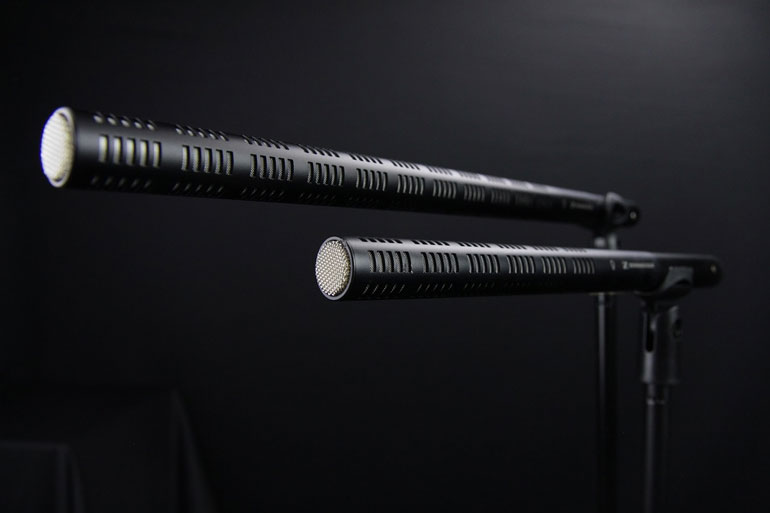
Matching B-mics like B-cams
This search for a matching B-microphone is no different than choosing a B-camera, ideally one that is similar to the visual characteristics of your A-cam. You want them to match as closely as possible, within the budget you’ve determined for your B-cam. Often that means sticking with the same camera manufacturer, or if that’s too costly, you start looking for cheaper cameras that match decently.
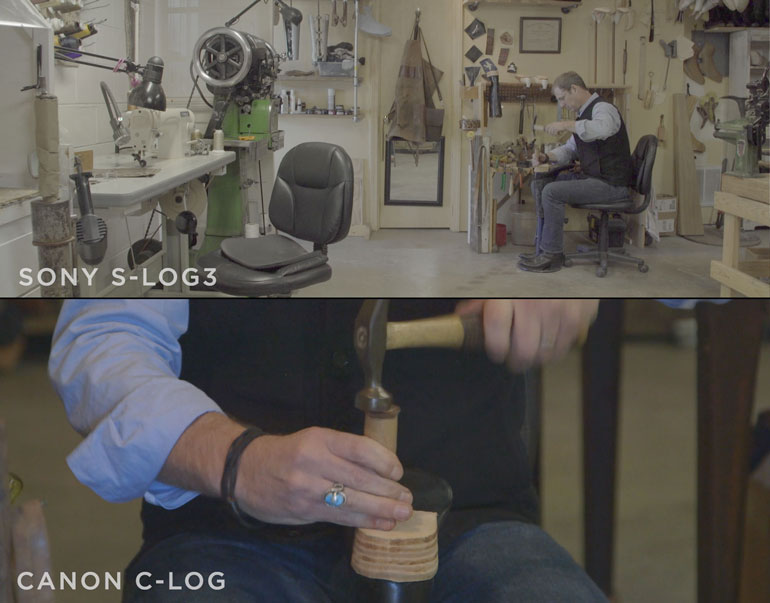
It’s why you’ll see comparison videos between the very flat image on the Panasonic GH5 and GH5S, or the Blackmagic Pocket Cinema Camera, as compared to Sony, Canon, and even RED cameras. Can you get 90% of the way there but only spend 30% of the price of your A-cam? You only plan to use the B-cam during a small portion of your production, so it makes sense to look for a camera whose cost matches your estimated use.
The main difference with choosing a microphone is that many filmmakers don’t already have an A-mic. They’re looking to find the one microphone they’ll use for the majority of their productions. And they want something that rivals a high quality industry standard, but at a B-mic price point.
Why insist on a cheaper microphone? Because budgets
Why insist on finding a cheaper microphone? Perhaps you’ve already decided in your total budget breakdown, that you’re willing to spend x amount for camera and lenses, and y amount for audio, and you must stick to this budget.
For anyone who suggests buying the most expensive audio equipment from the get-go - because “why skimp on audio when it’s such an important part of your video? - because there are many other important parts of your project or video business that you also can’t skimp on, such as casting, location rental, travel expenses, marketing and promotion, food.
Maybe this budget mic purchase is only for this project, or for this year, and maybe later down the road you plan to increase your gear budget. But for now, you only have a set amount you can spend on a microphone. And you want the very best you can get for that amount. Can anyone argue with that?
Choosing a Microphone: Industry Standards
Before spending days watching and listening to microphone tests, how do you decide where your starting point is? Often, you look for an industry standard - whatever the majority of other experts have determined is the all-around best microphone.
In the microphone world, there are a few “industry standards,” mostly determined by how often they’re used on professional sets over a long period of time. And so we often hear that the Sennheiser MKH-416 is a popular industry standard for shotgun microphones, because sound professionals and rental houses see that mic being used on many productions.
That also goes for the Sanken CS-1 and Sanken CS-3e, Sennheiser MKH-60 and Sennheiser ME-66, and Scheops Smit 5U (which comes in a distinct blue housing). For indoor dialogue, there is only one industry standard and that is the Schoeps CMC641.
But in the video production world, you would be surprised at how far we veer from “industry standard” microphones. Probably because we use shotgun mics on top of our cameras far more than we place them on booms, opting instead for lavaliere mics for our most sound-intensive scenes: the interviews.
For video producers - and we are only presuming here - Rode has probably sold more VideoMic Pros than any other microphone out there. They were the first audio company to specifically target video shooters, and with the rise of DSLRs, practically every kit on the planet (including our filmmaking equipment list), included a Rode VMP.
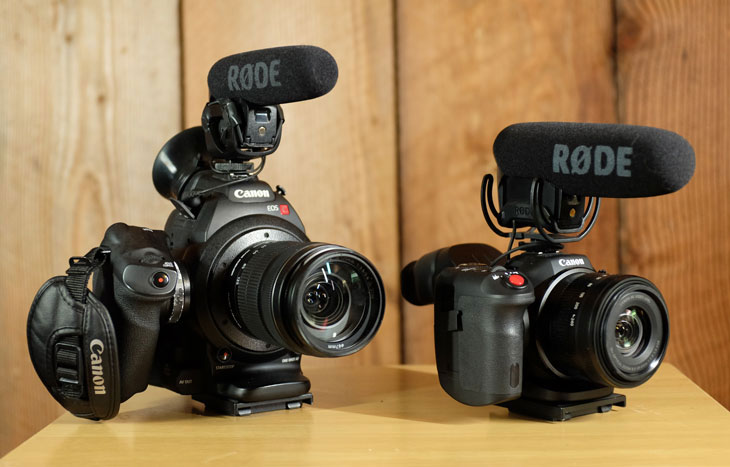
But the VideoMic Pro has a different form factor and application than a typical shotgun. So when it comes to short shotgun microphones, every new-ish product - even Rode’s budget friendly NTG-2 - is compared to the Sennheiser MKH-416. And every hypercardioid or dialogue microphone is billed as "the poor man’s Schoeps CMC641."
It’s all an unfortunate side effect of a whole new crowd of consumers (video shooters) who are looking at professional microphones, but they 1) don’t have the time or desire to conduct an intensive gear test or search, 2) don’t have a lot of money to spend, and 3) know that every gear category has a few gems that offer a very good value to price ratio.
Of course, we know there’s no one perfect microphone, just like there isn’t one perfect LED light. Most video producers will find that they need a variety of tools to bring to each production. Being able to adapt to different shooting environments and choose what gear you use is much more practical than spending all your time searching for one tool that will do it all. So if budgets allow, it’s recommended to have a few mics at your disposal, even if you’re just starting out.
Comparing Microphone Pickup Patterns and Use Cases
Without pouring through reviews or even listening to a microphone, you can get a sense of its use case by its polar or pickup pattern. However, it’s important to know that there are no absolute rules with microphones - you can choose to use any mic you want, depending on what sounds best to you. But there are some general guidelines.
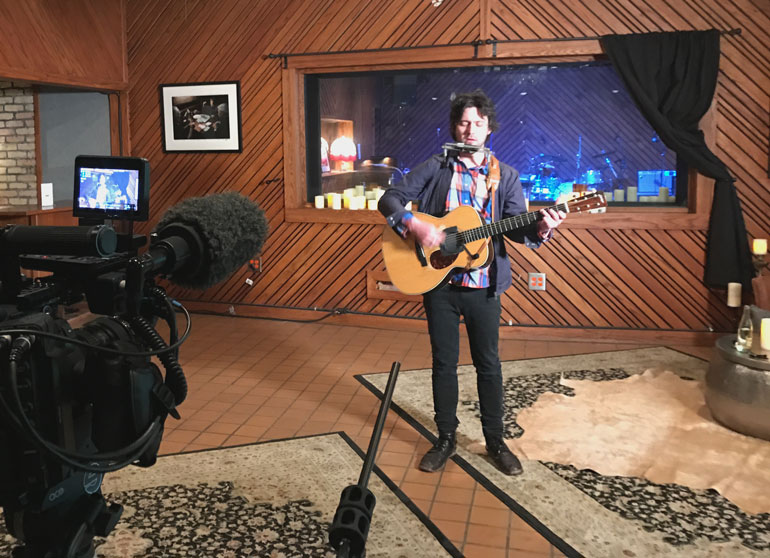
Using the Rode NTG8 and 3-4 other mics on a recent video shoot with Conor Oberst
Shotgun microphones vary in pickup patterns as well as sizes - there are super short shotgun mics like the Audio Technica AT875R, standard short shortguns which cover the majority of location microphones out there, and long shotguns (check out our review of the Rode NTG8 if you want to learn more about them).
Both the size of the tube and the polar pattern determine the directionality, or how narrow or wide its pickup, as well as its off-axis rejection.
Essentially, the more narrow the pickup, the more you’ll be able to reject unwanted noise, but you have to be more precise with mic placement.
For seated interviews, that’s usually not an issue, but if you’re hand holding a boom with a walking subject, a narrow pattern requires a lot of skill to operate.
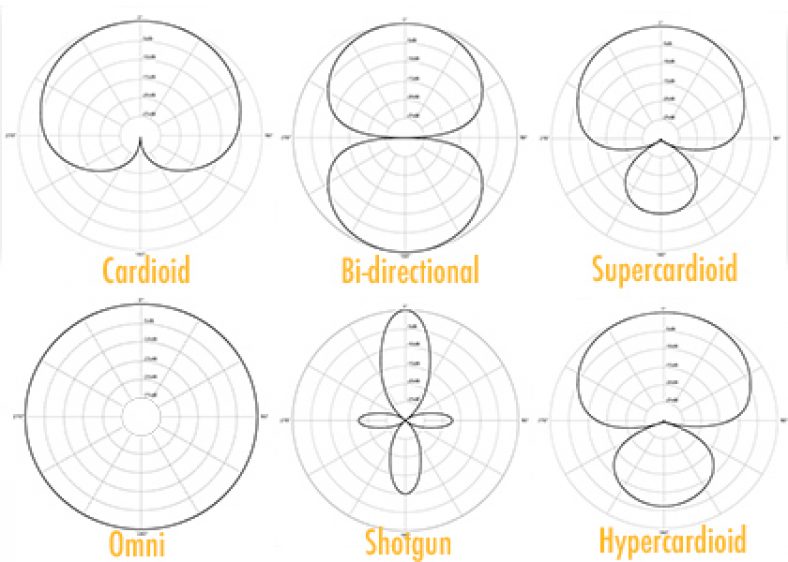
Ok so here’s our attempt to demystify the confusion around microphone types. In terms of pickup patterns, microphones range from omnidirectional to super directional.
Omnidirectional - these mics gather audio equally from all directions. Example: most lavalieres.
Cardioid - it’s shaped like a heart, hence the name. It offers some rejection in the rear, but generally captures most of what’s in front of it.
Hypercardioid - more directional, but picks up a little bit of sound from its rear.
Supercardioid - highly directional, and a smaller rear pickup.
Shotgun / Long Shotgun / Lobar - the most directional, thanks to its interference tube.
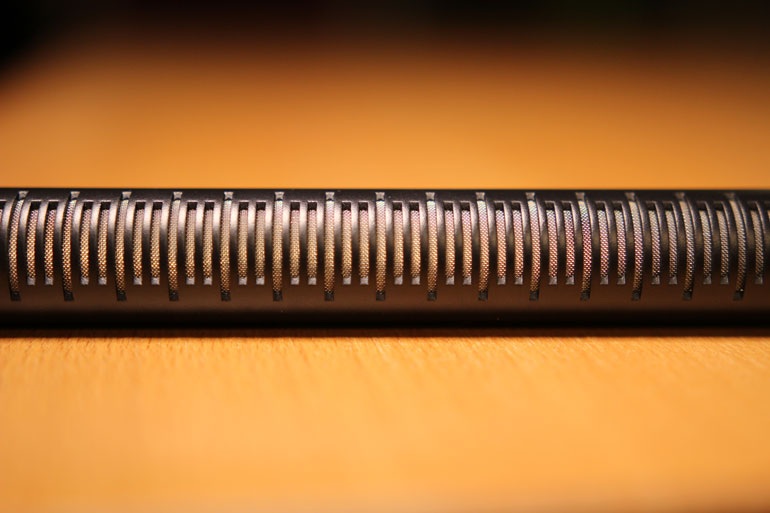
The thing that seperates a shotgun microphone from other types of mics with the same pickup pattern is the interference tube.
The tube has slots or openings alongside the side of the microphone, which dictates whether sound that arrives is on-axis or off-axis. The interference tube is separate from the microphone capsule itself, which has one of the pickup patterns listed above.
This is where it can get very confusing for everybody! You’ll often see articles, videos, and forum posts comparing microphones like this: Shotgun Mic vs Hypercardioid. But based on what you now understand about mics, you’ll know that a shotgun can be a hypercardioid. And there are other mics that are hypercardioid, but not shotguns.
Got it? If you want another primer, we recommend this article.
Comparing Microphones for Outdoor and Indoor Recording
All of this microphone technical talk can be frustrating if all you’re trying to do is get a basic sense of what microphones to use for outdoor versus indoor shooting.
In a nutshell, a shotgun microphone, with whatever pickup pattern you choose (cardioid, hypercardioid, supercardioid), is the preferred choice for exterior audio recording, whether on a boom or fixed to a camera.
For most indoor dialogue and interviews, however, a shotgun’s interference tube can introduce phasing or reverb effects that don’t sound good.

So for interiors, a small diaphragm condenser microphone on a boom pole is the preferred choice. Whether you choose a cardioid, hypercardioid, or supercardioid pickup pattern is up to you.
A starting point is estimating how many subjects you’ll often interview or capture at once, and whether you’ll have the microphone on a fixed boom pole or held by a boom pole operator.
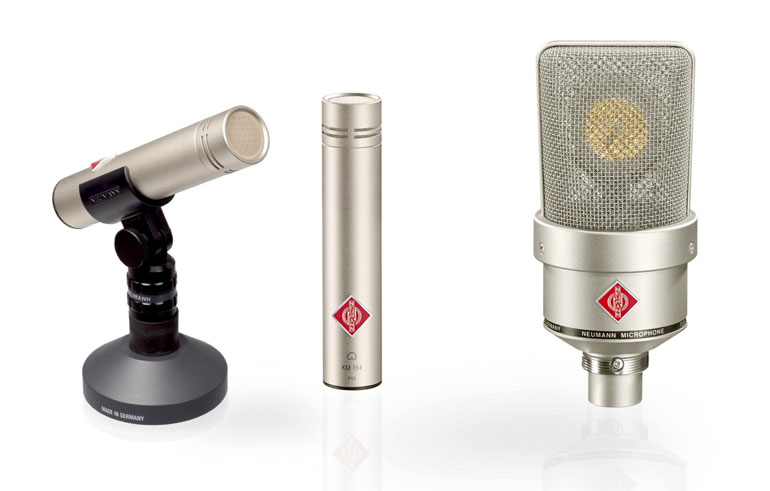
Neumann small vs large diaphragm condenser microphones
By the way, a large diaphragm condenser microphone is what you often see used for vocal recordings inside studios or recording booths, so it makes sense to use a smaller version of this in the field, where you are capturing voices but need to reject some unwanted room sound.
But again, there’s no absolute rules. You’ll hear from many sound professionals who use a Sennheiser MKH-416 or another kind of shotgun for indoor interviews or voice over recordings. But aren’t shotguns not recommended indoors? If the room is treated or doesn’t have a lot of reflections, you can capture perfectly sounding voices indoors using a shotgun.
And even if you don’t have an ideal room, you can still get great interior audio with a shotgun. If you have options, then sure, maybe a small diaphragm condenser would be better for indoors, but if you only have one microphone and it happens to be a shotgun, then that’s what you’ve got. Plus, there are many professional documentary filmmakers who use and recommend shotguns like the Rode NTG3 for indoor interviews.
In summary: Shotgun vs other Polar Patterns Confusion
To summarize, there’s a ton of confusion and misconceptions when it comes to categorizing microphones and their directionality. Partly it’s because manufacturers can choose how to market their microphones, and the internet can also add whatever flair they want. So unfortunately for consumers, comparing microphones is never a simple A vs B.
For example, a Schoeps CMC641 and a Sennheiser MKH416 are both super-cardioid microphones. And yet, one is considered the gold standard for interior locations, and the other is the gold standard for exterior recording. Both supercardioids.
Or how about this: anyone searching for an indoor hypercardioid mic will find several “Poor Man Schoeps” hypercardioid small diaphragm condenser mics. And yet, the Schoeps in question (a CMC641) is actually a supercardioid.
Of course, the directionality of a microphone is not the only distinguishing feature of microphones. There are lots of other considerations, such as self-noise, sensitivity, RF (radio frequency) rejection, dependability under certain temperatures, the amount of power it requires and whether it comes from a battery, phantom power, or no power at all.
And lastly, each microphone has its own characteristics that you can only hear by listening to it in different environments, using a variety of preamplifiers, and on different headphones or speakers. We all have different ears too.
Deity S-Mic 2 Shotgun Microphone
With all that out of the way, we can finally get to the Deity S-Mic 2. Thankfully, now that we’ve debunked the issues with comparing microphones head to head, as well as summarized the basic properties of the most common mics for video production, we can more easily describe the S-Mic 2 and its value proposition.
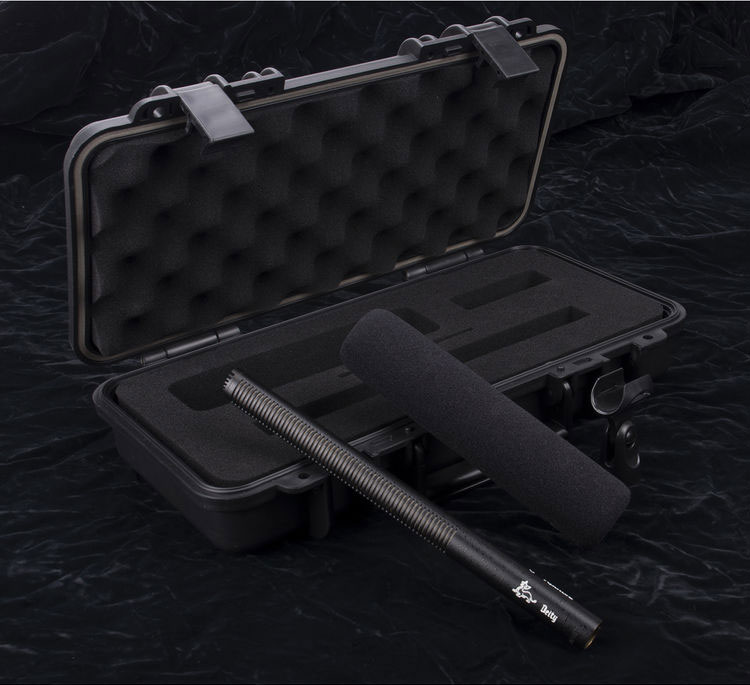
The original Aputure Deity
When the Deity was originally released, it was part of the Aputure lineup of high quality, affordable filmmaking gear. But since then, Aputure has pushed heavily into the lighting world, while their audio equipment has spun off into its own brand: Deity.
The original Aputure Deity was the first professional shotgun from Aputure, so there was a lot of excitement when it was first released. In the first few months, the messaging around what it was and who it was for wasn’t entirely defined, and the reviews and articles didn’t exactly clarify much either.
Is it an indoor mic, or outdoor shotgun? Is it super directional or forgiving for beginner boom operators? Is it a replica of the Sennheiser MKH-416, or is it closer to another mic like the Schoeps Cmit 5U, or is it not trying to be a knock off?
Unfortunately, some of those mixed messages still continue today with the Deity S-Mic 2. For example, this statement that shows up in most reviews: “ The Deity S-Mic 2 features a super cardioid pickup pattern which minimizes surrounding ambient sounds but still offers low off-axis coloration. The S-Mic 2 also is very forgiving when trying to point it at an actor or actress because of its super cardioid pickup, making it a great microphone for new boom operators.”
While we understand that all microphone manufacturers have to market toward a wide range of consumers, including beginners, you should know by now, based on our above breakdown, that a supercardioid shotgun is the most directional microphone, so “forgiving” is not a particularly good way to describe this microphone.
However, according to Deity, the S-Mic 2 does have a wider pickup than a standard shotgun like the Sennheiser MKH 416. So, it’s a little easier to boom multiple subjects, or someone who rocks back and forth during a sit-down interview.
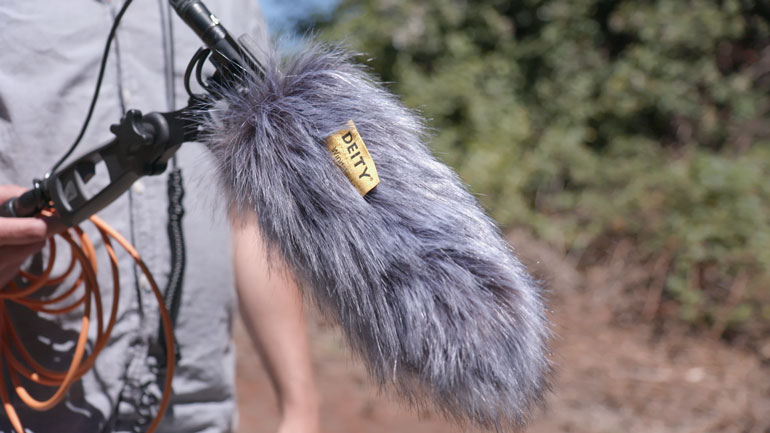
And whether or not it’s intended for indoors or outdoors, by now we should also know that a supercardioid shotgun is better suited for outdoor use, but it can certainly be used indoors as well.
For our buck, if you were to only have with one microphone, a shotgun like the S-Mic 2 would be a great all-around choice. It can be used on a boom pole outdoors, it can live on a camera, and of course it can be used for indoor dialogue, interviews, or as a desktop vlogging or podcasting mic.
By the way, if you use a shotgun microphone indoors and you end up with a lot of reverb, what can you do? Most of the time, audio experts will recommend you go back and re-record. But if that’s not an option, you can try a de-reverberation plugin like Zynaptiq Unveil or iZotope RX. We use both plugins all the time, and go into more detail about them in our Audio Repair article.
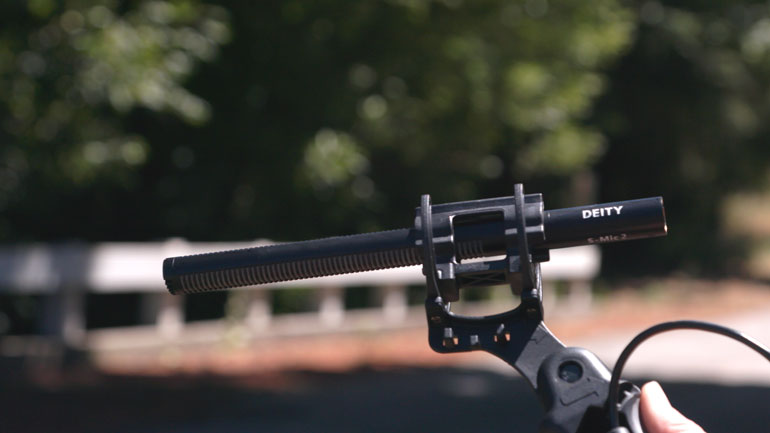
The S-Mic 2 claims a few improvements to the original Aputure Deity, with lower self noise, and better sound altogether. Like the original, it is built very tough and is meant to be dependable in a variety of conditions, wet or dry, hot or cold.
We’ve seen videos of this mic being dropped in a bath of water - which is a crazy test of durability, but unlikely to ever happen to a microphone on most productions. Getting caught in the rain is more likely, but you’ll probably have a windshield on it anyway.
Deity S-Mic 2 Cost vs Value
As far as value goes, the S-Mic 2 offers a lot of microphone for the price. We started this long article with the concept of diminishing returns, and the S-Mic 2 is a really good example.
At $360, the fact that there is even a comparison with the $999 Sennheiser MKH-416 is a good sign of the S-mic 2 value.
You could easily spend 2.7x more money, but you’re not getting 2.7x the quality.

Again, we’re not as concerned with mic comparisons as much as we are about getting a good microphone for the value. But if you want to hear how the S-Mic 2 and Sennheiser MKH-416 compare, here's a good video:
Brands like Sennheiser can charge a premium price for a similar microphone simply because they can. Many years after it was first released, Sennheiser has most likely made up their original R&D and manufacturing costs thousands of times over, but they can continue to charge $999. From time to time, it goes on sale - B&H had it discounted to $599 a couple years ago - but for the most part, microphone prices don’t change.
Unlike Sennheiser, Deity is a very small company, so they price their products aggressively in order to capture a small piece of the market. They don’t make “cheap gear.” On the contrary, they make high quality audio gear and set prices that are closer to their real-world costs than more established brands.
In an email, here’s what Deity’s Andrew Jones has to say about their value proposition: “We do small batch runs on CNC machines, so we don’t have any special machinery we carry debt on per the product. And I think thats something that allows us to offer the best value and still make a profit to support our employees.”
In summary, the Deity S-Mic 2 is a dependable, workhorse microphone that can be used in a wide variety of situations, at a very reasonable price. It’s an even better deal if paired with the Location Kit.
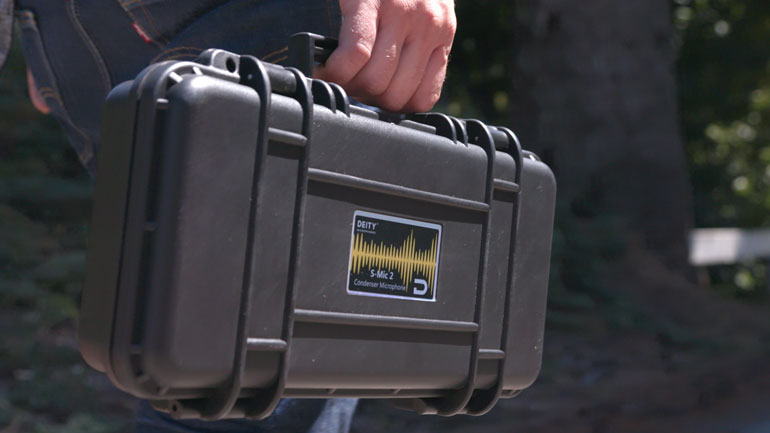
In addition to the carrying case and standard microphone foam windscreen, the Deity S-Mic 2 Location Kit also adds a Rycote shock mount with handle. It can be attached to a standard boom pole, or used handheld as a pistol grip. The kit also comes with a custom made deadcat windjammer.
If you’ve ever shopped for a Rycote softie, you’ll know one of these can cost $100 on its own. So for an additional $70 above the price of the S-Mic 2, you get both a deadcat as well as a Rycote pistol grip shock mount. Not a bad deal.
This concludes our overly extended review of the Deity S-Mic 2, and why comparing microphones can be both fruitful as well as misleading for the end users. We leave you with this official S-Mic 2 launch video from Deity. If you look closely, you’ll recognize a couple Gear Dads in the video (hint: we’re in the thumbnail).
Deity S-Mic 2 - Official Site / B&H Photo Video / Amazon
